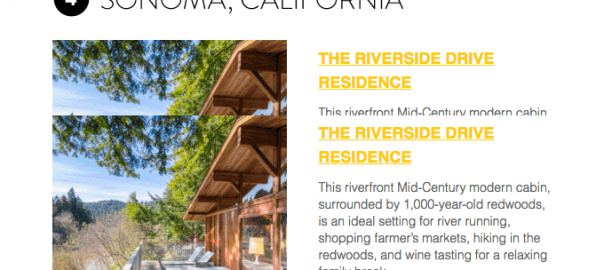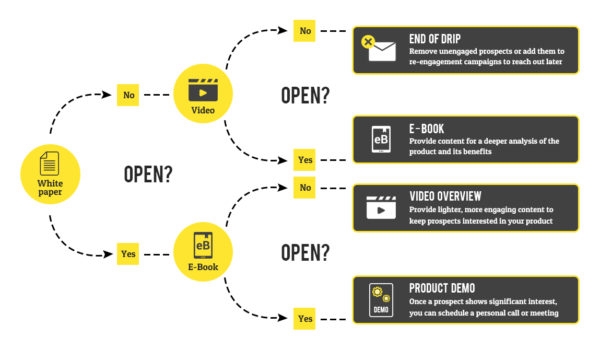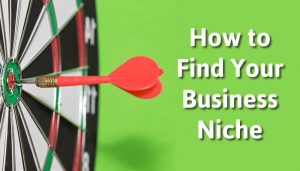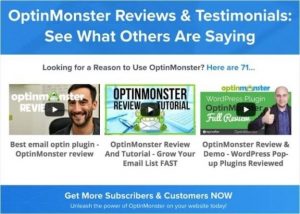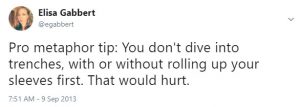— February 6, 2018
Ever entered the bookstore, and bought the first book you saw, not knowing anything about the book? Never! You have shown interest, just by picking up the book. Your first instinct is to check the plot. If there are testimonials from the top newspapers printed on the book cover, you tend to read them too. Next, you pull out your phone and check for reviews on Goodreads. Once you are satisfied, you make the purchase and walk out of the store happy.
That’s how a lead nurturing campaign works. It gives your prospect a clear idea about the brand, thus helping them move from consideration to decision stage.
Nurtured leads make 47% larger purchases than those who buy immediately.
When someone visits your website, it is not always because they have made up their mind to buy from you. In fact, most of your leads lie in the top or middle of the sales funnel. They are either in the research phase, which means they would not want to know more about you or, they are in the consideration phase, which means they still need time to think before buying.
You need to work on an active inbound lead nurturing email strategy that will help you convert your leads into customers.
How Lead Nurturing Helps
Companies that nurture their leads generate 50% more sales. Lead nurturing allows you to connect with your prospects, engage them, and gain their trust. Let’s see how lead nurturing helps you as a business:
- Immediate connect: You get to connect and respond to your leads immediately. The faster you answer, the higher your chances are of converting the lead into customer.
- Show your expertise: When they sign up for your newsletter, they are hardly aware of what you do, and why they should choose you. The lead nurturing campaign gives you a platform to showcase your expertise.
- Understand the prospect: If you know what your prospect is interested in, you can get them to complete the purchase easily.
- Identify the pain areas: This will help you offer relevant content. Depending on how they respond, you can communicate further, and convert it to sales.
- Opportunities to segment: No two prospects will behave in the same way when they see an email from you. Lead nurturing helps you identify how your prospect is likely to behave and segment the email based on that.
How Email Automation Helps
Imagine sending out the nurturing emails to all your leads manually. That would not just cost you a lot of time, but also a lot of money. Automation helps you send out relevant emails at the right time to the right audience. When you build campaigns that connect with your audience’s needs, chances of improving your conversion are high.
Targeted emails help you reach out to your audience at a time they are more likely to open it. If you use email automation, you will just need to create a campaign, and the job gets done. You can concentrate on your core business, while your leads are being targeted and persuaded to convert.
An email marketing campaign works only when you can monitor the open and engagement rates. Depending on the metrics, you can identify what the reader is interested in, and accordingly, send them content and information.
Segmentation is possible based on the metrics you have, to send a more targeted and personalized email.
Finally, your sales team can concentrate on conversion of quality leads that are nurtured by the email campaigns.
If the receiver has subscribed, without the intention of buying right away, your email campaigns can place your brand at the top of the mind, and work towards moving them along the sales funnel gradually.
Lead Nurturing Automation
The idea of nurturing your leads is to understand their journey, offer them information that is relevant, and help them make the right decision.
To make sure you achieve your goals via automation, you need to define the workflow. With a workflow, you would read into the recipient’s behavior, and send in information accordingly. You will know the buyer like the back of your hand and provide them with instances that help them in their journey.
There are three aspects of lead nurturing email automation:
- Adding value to your content to nurture your relationship with the prospect.
- Provide them with content that educates them about your brand and the services or products. Make sure you take this as slow as possible so that they don’t feel you are hard selling.
- Personalize your workflows by segmenting the audience. This will help you offer relevant content to the audience at the right time.
Best Practices for Email Automation
If you want to nurture your leads with email automation, there are few things that you need to consider before planning the campaign.
- Work on the goal: Your ultimate goal is to move the prospect to the next stage in the lifecycle by providing them relevant content. The goal could be getting the prospect to attend a webinar or visit the pages on the website, depending on the lifecycle stage. There will be a goal at every stage of the workflow, which if met, the prospect moves to the next stage. However, if the goal is not met, you make another attempt at achieving the goal.
- Identify the personas: It is important to consider the persona when defining the workflow. The right personas inserted into the workflow will help you personalize the emails better and make moving them towards the decision stage easier.
- Frequency & type of emails: The total number of emails you should send in the series is defined by the type of emails you will need to send to the segmented audience. This depends on the lifecycle stage of the prospect. Plan the frequency as well. You don’t want to overwhelm your prospects with too many emails within a short span of time.
- Build agile campaigns: Each prospect will take a different route along the sales funnel. It is important for you to nurture them accordingly. Ideally, you should have different nurture campaigns based on how the prospect is engaging with your email. This will also help you spot the bottlenecks in the campaign, and help you convert them into opportunities.
The Email Automation Workflow
Types of Emails to Send
Depending on your goal, here are the lead nurturing campaigns you should be planning. When nurturing the lead, you may want to engage them, educate them or convert them, depending on the lifecycle stage. Let’s see the types of emails you should send depending on your goal.
If you want to engage the prospects
Email Type 1: Welcome
This helps you onboard the newly signed up prospects. The welcome email is an excellent way of educating and engaging the new prospects. As they are new, the email content should be designed accordingly. It is always a good idea to welcome them with a series of emails.
This email by designbetter.co welcomes the subscriber. It gives them an idea of what to expect from the brand’s emails. It is the first step towards engaging and nurturing the lead. The series of emails containing all the information and educational material about the brand will help engage further.
Email Type 2: Pre-eminent
Even after on-boarding, your leads may not be sales ready. You need to ensure your brand stays at the top-of-the-mind. This is why you should engage your audience in the top-of-the-mind recall engagement campaigns. It is important to offer value to the prospect at each stage of their decision-making journey.
Email Type 3: Re-engagement
This is a great automated campaign to nurture the leads who became inactive at some point along the decision-making journey. This will help get these inactive leads into the sales funnel once again.
When you haven’t heard from your prospect for a while, sending them a re-engagement email/s similar tothe one sent by Typeform can help you get them on-board again.
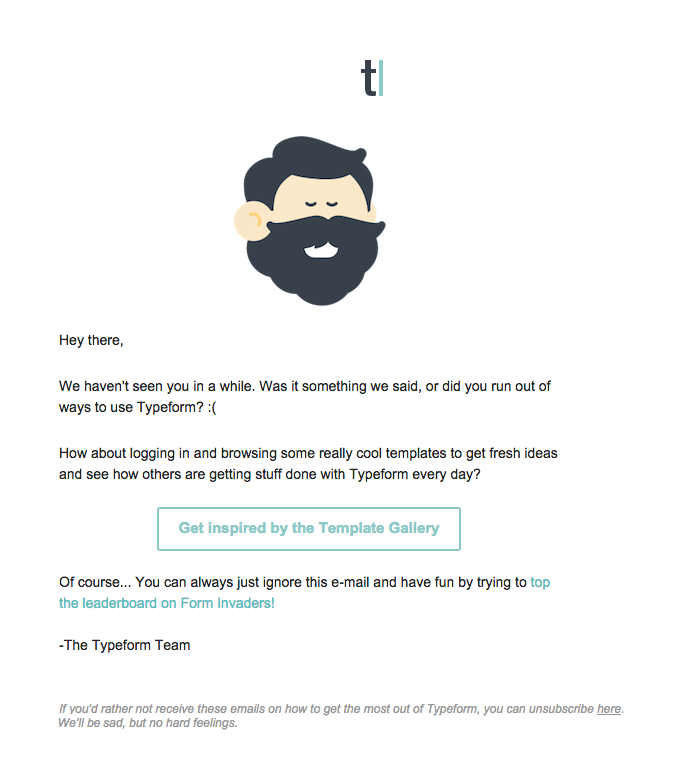
If you want to educate the prospects
When the prospect is in the research or consideration stage, it is important to educate them. Here are a few lead nurturing campaigns you can automate to educate the prospects.
Email Type 1: Address the pain points
You can send out an automated email series, which addresses their pain points, and helps them understand how your product can help them. The content should offer everything the prospect needs to know about the product.
This email by Kid & Coe has identified five-star getaways in theUSA. For the segment looking out for options, this is the perfect email, as it addresses their question with the right products.
Email Type 2: Highlight the USP
There are too many brands that focus on the same issue as yours. You may want to differentiate your product from that of the competitors. You can attempt this by highlighting your USP and showing how your product is different. This email campaign needs to be planned and segmented based on the prospect’s needs and lifecycle stage.
If you want to convert the prospect
At some point along the journey, your prospect is ready to convert into a customer. This is when you need to plan out campaigns that can close the deal for you.
Email Type 1: Showcase your expertise
By now, the prospect is interested in you and is well aware of your products and services. It is time to convert them. Send them an email that reinforces their belief in you. The content should convey why they should choose you. Industry reports and press releases that showcase your expertise can help you convert easily.
This email aptly explains why you should opt for Verizon. If the user was researching networks, and considering Verizon, this is the perfect time to send such an email.
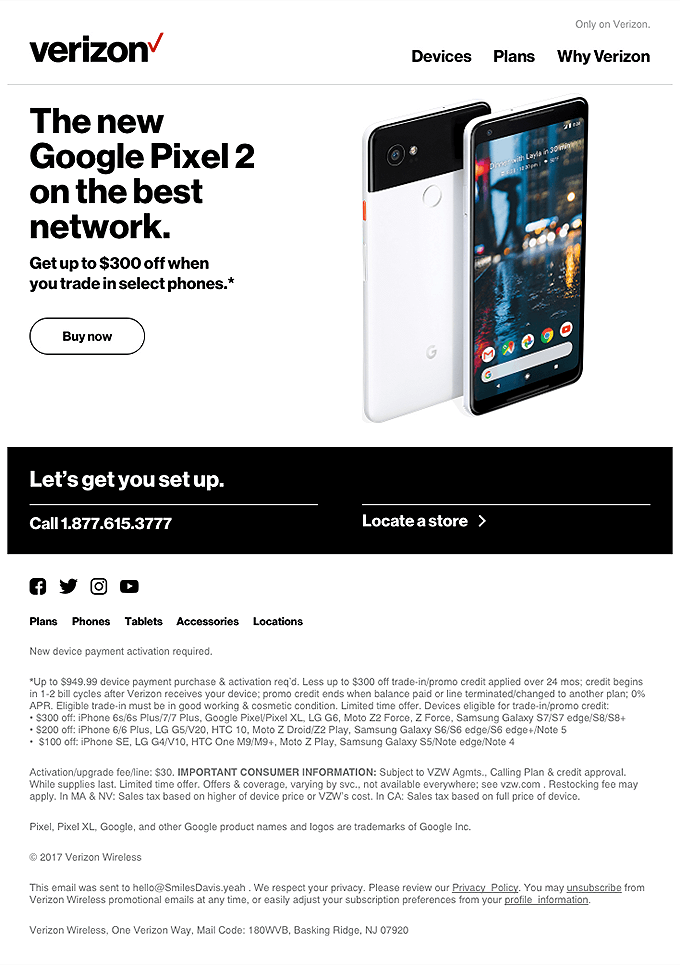
Email Type 2: Promotional campaigns
When the prospect is nearing the end of the sales funnel, you can offer them an incentive to convert. Trigger the purchase by sending out an email that offers them discounts. You can even offer special pricing to the prospect, which will convince them to complete the purchase.
The email sent by Crate & Barrel is the apt promotional mailer. If the prospect is already thinking about purchasing, this email will persuade them to complete the purchase.

Wrapping up
Email automation in a lead nurturing campaign helps you respond to your prospects immediately. You can follow the buyer’s journey and engage them at the right touch points, thus improving their experience. By monitoring and measuring the email campaigns, you would be aware of the prospect’s lifecycle stage, and provide them with information that is likely to help them take the decision. It is patience and constant engagement that will get you the next customer from a lead.
Digital & Social Articles on Business 2 Community
(55)
Report Post